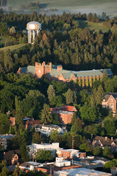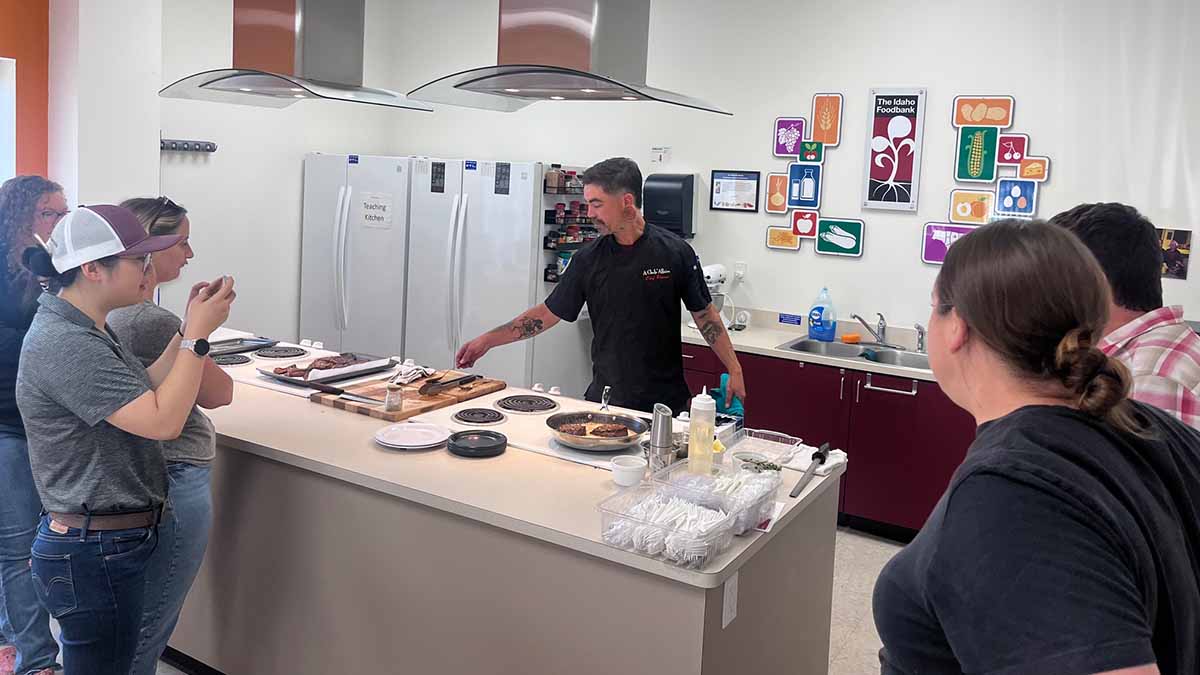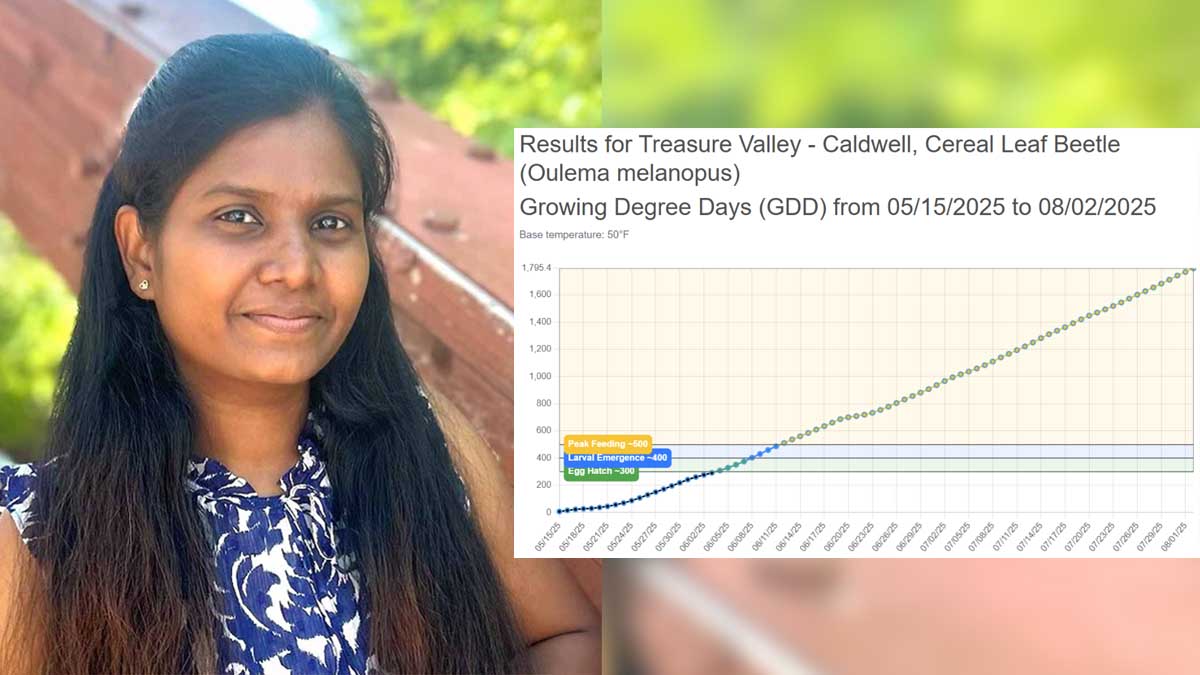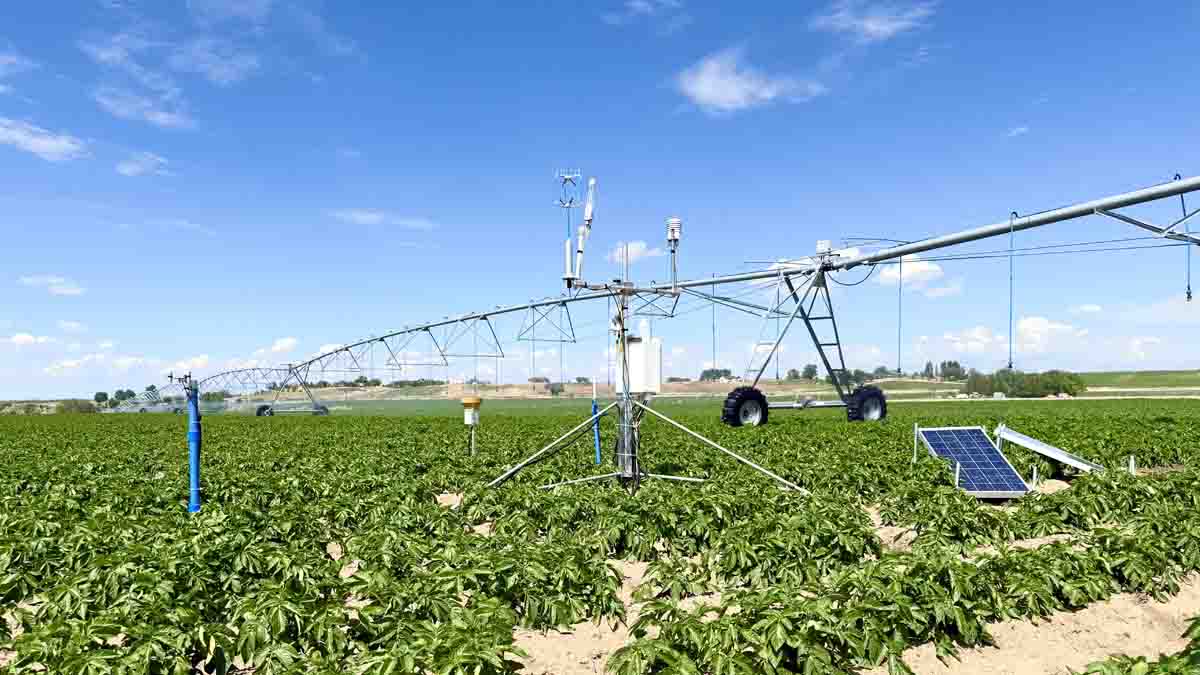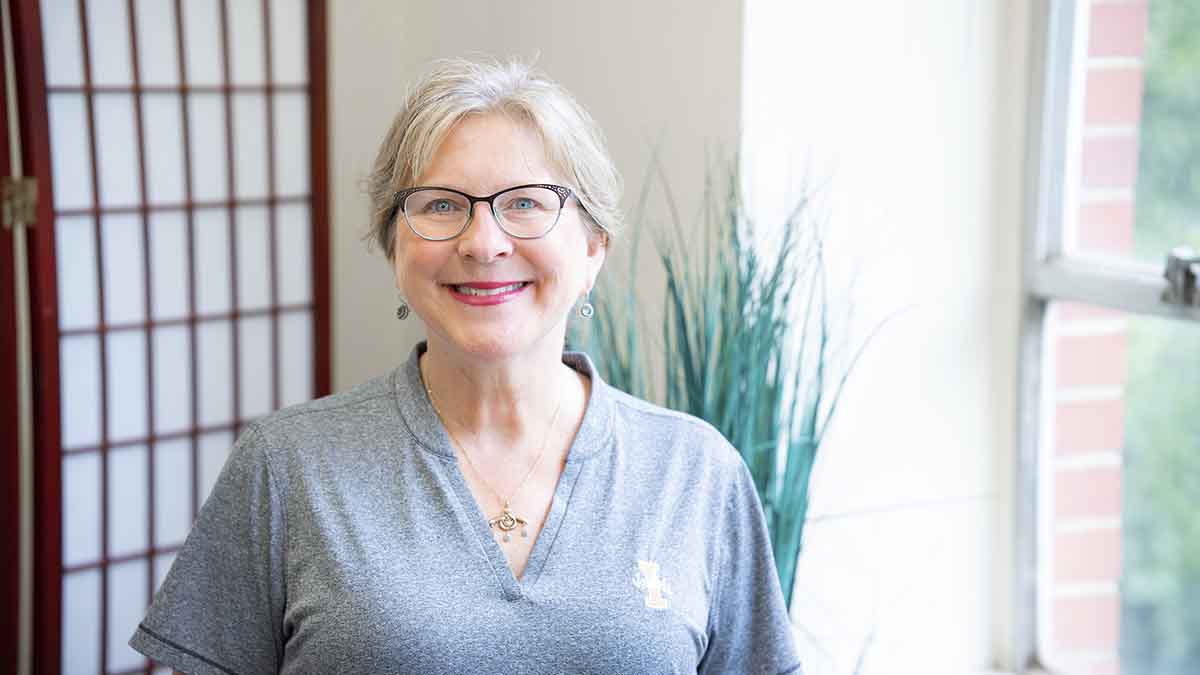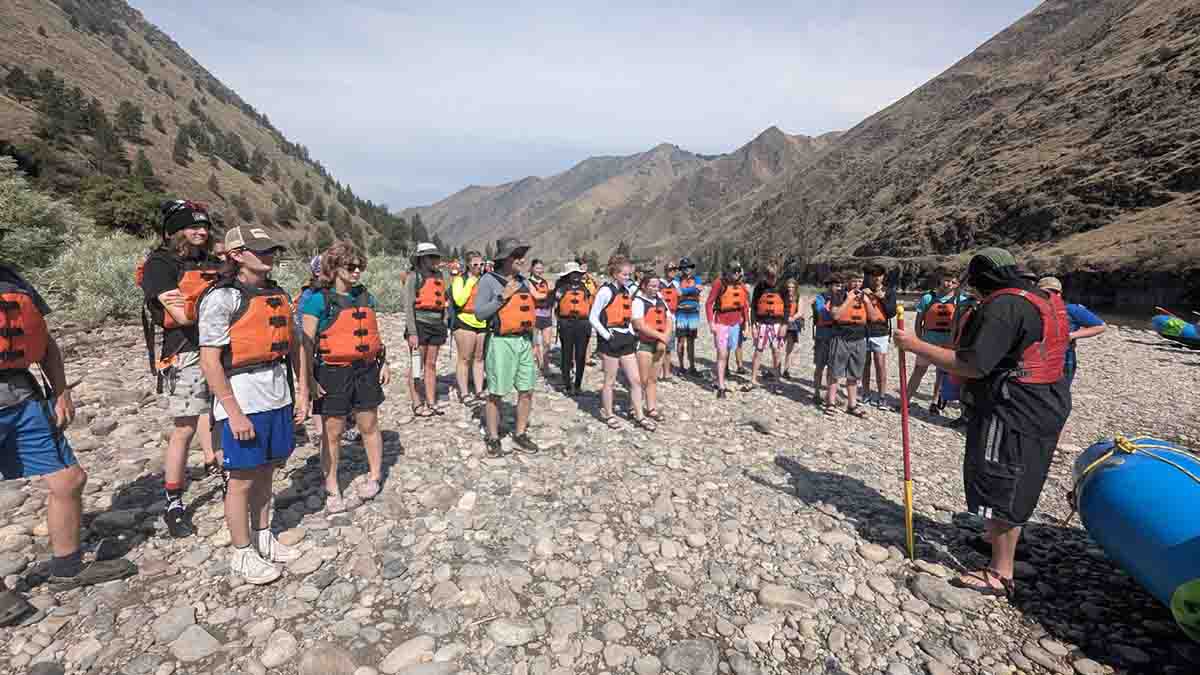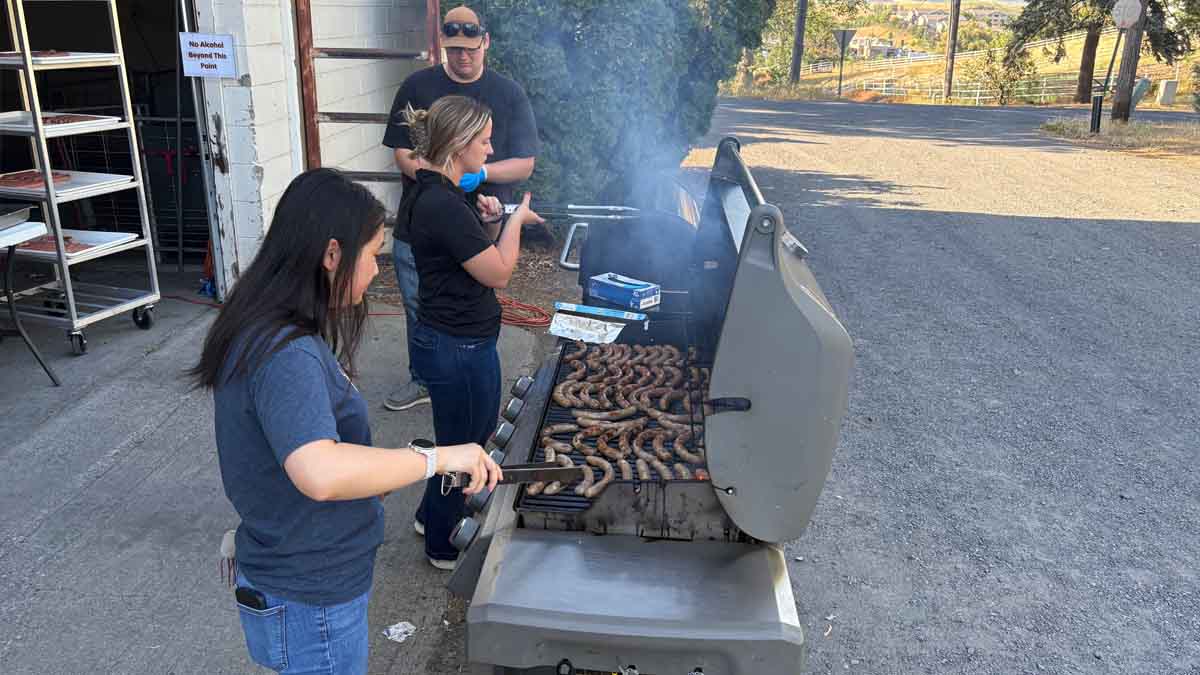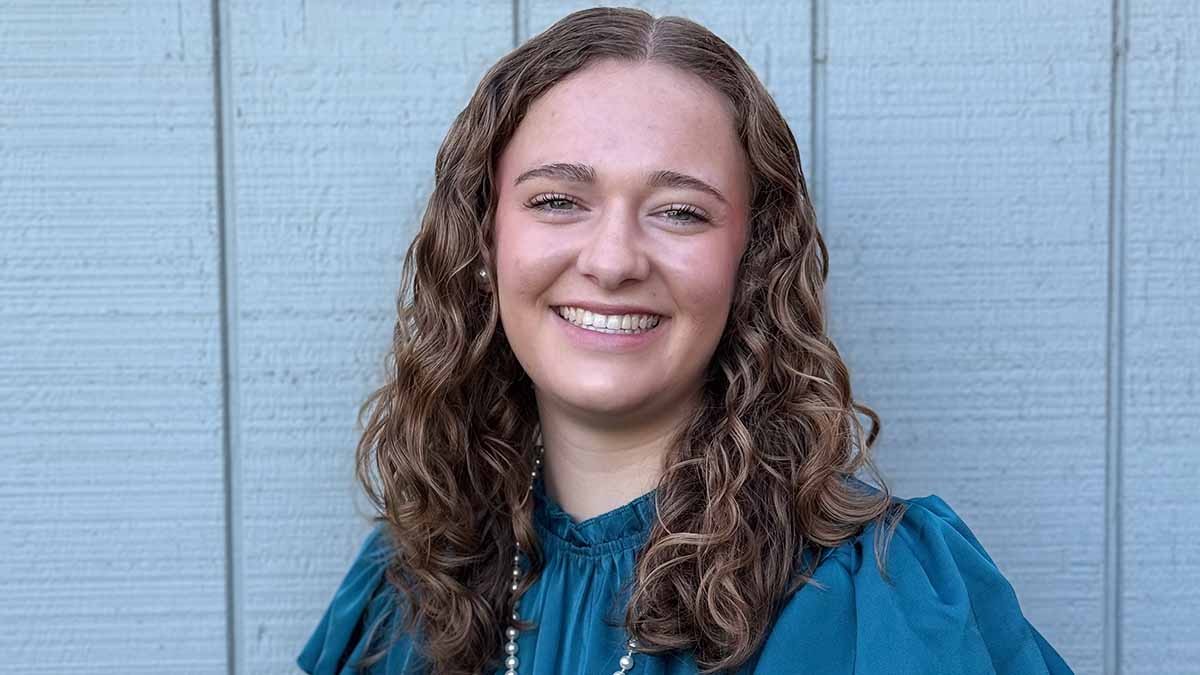Catching Up with CALS — Aug. 13, 2025
Dean's Message — F
I’ve success.

Leslie Edgar
J.R. Simplot Endowed Dean
College of Agricultural and Life Sciences
Our Stories

Fighting Food Insecurity
Northern Idaho community food banks facing cuts to their federal assistance are turning to University of Idaho Extension to help feed local families in need.
At the request of the Bonner Community Food Center, staff at U of I’s Sandpoint Organic Agricultural Center (SOAC) have ventured into potato production this season and plan to expand next summer into other needed storage crops, including winter squash, cabbage and onions.
Furthermore, Extension educators Audra Cochran, Clearwater County; Jessie Van Buren, Latah County; and Meranda Small, Idaho County; are partnering with the state’s cattle producers to fill freezers at the Idaho Foodbank Lewiston Branch with beef. In northern Idaho, 14.7% of the population, including 21% of the region’s children, face food insecurity, according to Feeding America’s 2025 Map the Meal Gap report.
“Food insecurity really is an issue across the nation, but especially in Idaho and definitely in north Idaho,” Cochran said. “We’re all teaming up to help the food banks and our communities. We’re vested in our communities in a lot of ways.”
At SOAC, interns and market gardening instructors planted 600 pounds of potato seed in six rows within a 200-foot by 35-foot plot on June 20. The bed had already been prepped and fertilized when staff received the food center’s request.
Despite the late planting, Kyle Nagy, SOAC superintendent and orchard operations manager, is optimistic the facility’s first potato crop will yield up to a ton of spuds.
They will be using a potato hiller every week to remove weeds from between rows and pile dirt on top of potato plants. At season’s end, they’ll dig the spuds using an antique, tractor-pulled harvester, and volunteers from the food center will help fill storage bins. The local nonprofit organization Food for Our Children donated funds to buy the seed and install a drip irrigation system.
“We’re always looking for ways we can be helpful and impactful in our community, and when this opportunity came up, it was a no-brainer for us,” Nagy said. “We knew we had to help.”
Next season, Kendall Kahl, an Extension specialist in sustainable organic agriculture based at SOAC, anticipates tying research projects to storage crop production. For example, she has ongoing cover crop trials at the facility and could plant potatoes and other storage crops in beds following cover crops to assess soil health benefits. She’d also like to research storage crop management practices in an organic system.
“There’s a human benefit and also an educational benefit you can make from the same crop,” Kahl said. “I really hope to pair both of those things.”
Debbie Love, executive director of the food center, has seen a 53% increase in food demand in Bonner County during the past two years. The U.S. Department of Agriculture has historically supplied a quarter of her center’s food donations. However, Bonner, Kootenai and Boundary counties received a single truckload of lentils from the agency during June rather than deliveries of eight different shelf-stable and frozen commodities they’d been expecting. Love also received notice of the cancellation of four truckloads of meat the counties had been anticipating from USDA during July.
Her food center serves 3,200 families per month. In addition to SOAC, which has also supplied the center with up to 4,000 pounds of other produce annually from its market garden, Love said the community has stepped up its contributions recently. Love has started new food drives, including a Christmas in July donation event.
In July, Extension participated in an event at the Lewiston food bank in cooperation with the Idaho Beef Council’s Beef Counts program, Agri Beef and the Idaho Cattle Association. U of I’s meat science team broke down a beef sirloin into sub-primal cuts, educating UI Extension 4‑H Youth Development volunteer leaders and other stakeholders about where on the carcass specific meat products come from. A local chef gave a cooking demonstration featuring sirloin and described beef’s role in a healthy diet, and Cochran, Van Buren and Small labeled about 2,000 pounds of ground beef to be donated to the facility with the Beef Counts program logo. Through Beef Counts, the beef communities in Idaho and Washington have supplied more than 6.5 million servings of beef to people in need since 2010.
The Extension team also helped label ground beef for Beef Counts last year, in addition to hosting their own fundraisers in 2024 to supply cash and beef donations to the food bank.
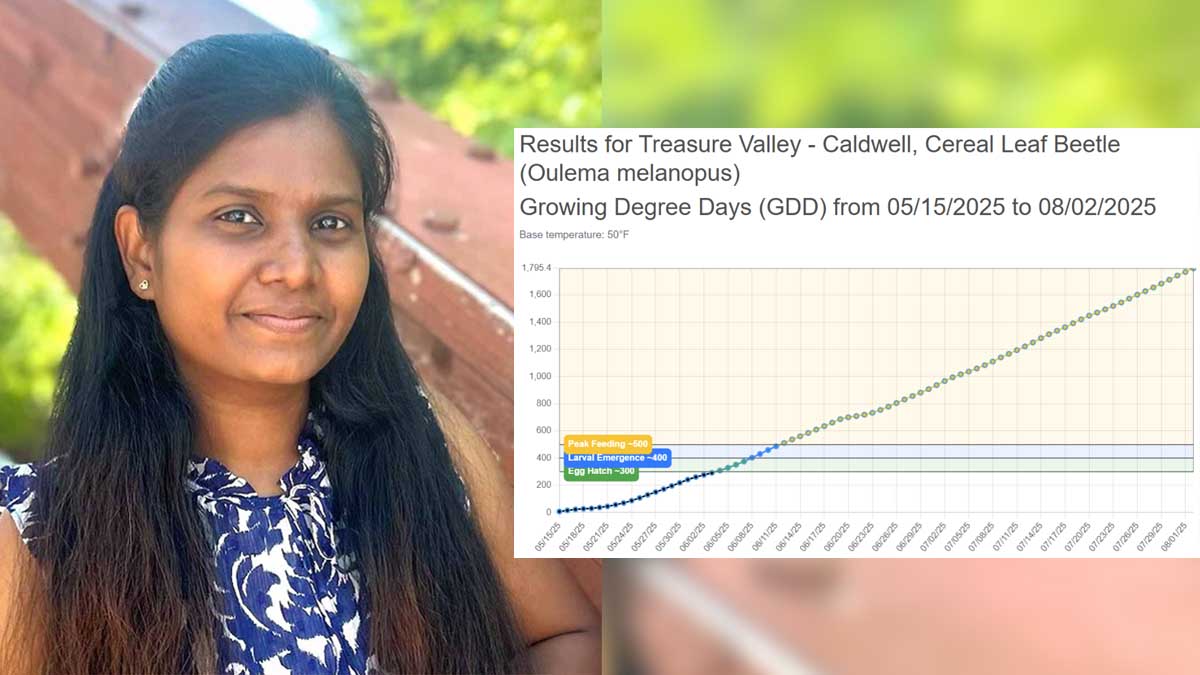
Heat Calculator
A University of Idaho Extension scientist has developed an online tool to help farmers track how accumulated heat throughout the growing season affects the development of crops and important pests, helping them better time management decisions.
Several Treasure Valley farmers are already using the beta version of the Growing Degree Day Calculator and have consulted its creator, Jemilla Chellappa, an Extension area educator specializing in cropping systems, for guidance on how to apply it.
The calculator is linked to the Pacific Northwest Pest Alert Network website, operated by UI Extension, Idaho Master Gardeners, Oregon State University and the U.S. Department of Agriculture’s National Institute of Food and Agriculture to provide alerts to users about pest and disease threats affecting crops.
Chellappa is working to incorporate the state’s major crops into the calculator and has already added potatoes, sugarbeets, alfalfa, barley and wheat. The software uses site-specific calculations to pinpoint the growth stages of key pests and diseases affecting those commodities, including wireworms, alfalfa weevil, apple codling moth, cereal leaf beetle, onion thrips, potato psyllids, two-spotted spider mites and cercospora.
“With the successful launch of the Growing Degree Calculator on pnwpestalert.net, we now have a user-friendly, real-time tool to help farmers, researchers and advisors across the Pacific Northwest track crop development and pest stages based on temperature, not just the calendar,” Chellappa said. “For generations, farmers have turned to the calendar, but the calendar can’t tell you what the weather has or hasn’t done.”
The calculator draws localized data from the U.S. Bureau of Reclamation’s AgriMet network of automated weather stations.
Growers may adjust the date on the calculator to tally degree days from the date of planting or the start of the calendar year. Data from the calculator helps farmers avoid unnecessary chemical applications, while preventing them from missing ideal windows for spraying. Based on this season’s growing degree days, for example, the optimal timing for a wheat farmer in the Pocatello area to spray insecticide to control cereal leaf beetle would have been from June 5 through June 9 during the insect’s peak larval stage.
A growing degree day is calculated by averaging each day’s high and low temperatures and subtracting a specified base temperature, which is the lowest temperature at which a chosen crop will grow. For most of Idaho’s major crops the base temperature is about 50 degrees. For example, the growing degree calculation for a potato crop on a day with a high temperature of 95 degrees and a low temperature of 45 degrees would be the average of the two, 70 degrees, minus a base temperature of 50 degrees, equaling 20 degrees.
Chellappa plans to add additional crops, pests and diseases to the calculator, as well as features informing growers of the ideal timing for scheduling irrigation and applying fertilizer. The software incorporates Extension publications on pest and crop development and links to relevant Extension information. As new Extension bulletins and publications are published, Chellappa will use the data to further refine the calculator’s recommendations.
Chellappa realized the need for the calculator shortly after joining Extension in 2023. Growers who responded to a survey she administered said they wanted more specific guidance on spray scheduling. She couldn’t find much information to offer them, however. She considered the tools that were available to be complicated, and they didn’t clearly explain the concept of a growing degree day.
By enabling farmers to eliminate unnecessary chemical applications, this calculator also protects beneficial insects or biocontrol agents that predate on pests.
Furthermore, farmers can use the calculator to track whether their crops are progressing on schedule and to identify likely causes if crop development falls behind where the calculator indicates it should be.
Chellappa is seeking additional funding and collaborators to further develop the calculator.
“The calculator turns weather data into biological insight, helping you track growth stages and insect pest development using daily temperatures and known thresholds,” Chellappa said.

SnakeFlux: Measuring Crop Water Use
A University of Idaho researcher has established a network of field-based monitoring stations throughout southern Idaho, generating data to develop and improve models assessing the volume of water lost from crops through evapotranspiration (ET).
Idaho water managers administer water rights based on diversions — the volume of surface water that irrigators divert or groundwater that they pump from wells. However, diversions include not only consumed water through ET, but also unconsumed water that returns to streams or aquifers and becomes available to other downstream irrigators.
Meetpal Kukal, an assistant professor of hydrologic science and water management, believes a more comprehensive, fair and effective method of water accounting would be to also track the consumptive use of water emitted from foliage and soil as vapor through ET.
Kukal and support scientist Clarence Robison established the SnakeFlux network, which includes clusters of sensors at ten locations spanning the Snake River Plain from Declo to Wilder, stationed within desert sagebrush and irrigated potato, sugarbeet, spring wheat, barley and turfgrass fields. Two of these locations are within the university’s Idaho Center for Agriculture, Food and the Environment (Idaho CAFE), located in Rupert. The network also includes data from three monitoring stations that are part of an ongoing collaborative project with the Idaho Department of Water Resources (IDWR) and U of I researchers Erin Brooks, Jason Kelley, and Kukal. Those three stations are funded through the Idaho Water Resources Board.
The stations use high-frequency sensors that measure eddies — swirls of air that carry heat, water and gases away from the ground. Data will be delivered every half hour throughout the growing season, enabling Kukal to estimate water use based on a formula involving the total energy partitioned to evaporate water and heat the soil and air. His team also measures critical soil, crop and management data from these locations to better infer what drives ET. He plans to make critical water data available to Idahoans and will continue to look for agricultural sites to monitor in other locations within the Snake River Plain in consequent growing seasons.
“ET is an invisible process, which means it’s really hard to measure,” Kukal said. “With this network, we’re trying to make gold-standard measurements for this process.”
Kukal envisions several applications for SnakeFlux data, such as updating crop coefficients, helping farmers improve their irrigation scheduling and helping the state address gaps in water accounting. A crop coefficient is a parameter used to predict ET based on the amount of water a crop needs for specific growth stages and weather conditions. Crop coefficients of many popular Idaho crop varieties were last measured in the 1970s.
Having ground-measured ET data will also help gauge and improve the performance of products that generate real-time ET estimates based on satellite imagery. IDWR, for example, is considering using one such product, called OpenET, for keeping tabs on the state’s water consumption.
“Evaluating those products has recently been a really big priority for all of the western states,” Kukal said.
Kukal is making field-specific SnakeFlux data available on a website to commercial growers who have allowed him to locate sensors in their fields. He’s also been in communication with commodity commissions, industry and water managers to demonstrate applications for SnakeFlux, based on the potential to help farmers make crop-specific adjustments to improve their water management. Kukal is seeking financial and broader stakeholder support for U of I’s ET monitoring efforts.
Faces and Places
Shelley McGuire, director of the Margaret Ritchie School of Family and Consumer Sciences, was featured on the national public radio science show and podcast Science Friday, which airs on more than 500 local National Public Radio stations throughout the U.S. and has a weekly audience of 1.8 million listeners. The program, which focused on the science of breastfeeding and breastmilk, also included research related to the topic by Deepshika Ramanan with the Salk Institute.
University of Idaho Extension 4-H Youth Development hosted the National Leadership Institute for 4‑H Shooting Sports from July 29 through Aug. 2. The event drew 32 teen ambassadors from 18 states. The group participated in activities teaching leadership skills, communication, suicide prevention knowledge and team building. They also got to see Idaho’s natural resources through recreation, including going on a white water rafting on the Salmon River near Riggins, and they participated in etiquette dinner with CALS leadership. The event was organized by Tami Goetz, 4‑H Extension area educator for the northern district, and Tina Miller, 4‑H Extension educator for Twin Falls.
University of Idaho hosted the National Lamb Summit July 23-25 in Moscow. The event is hosted every two years by the American Lamb Board and drew about 150 participants, as well as representatives from Australia and Canada. Speakers focused on improving sheep business, genetics, health, grazing and other topics, and participants toured the U of I Sheep Center and Vandal Brand Meats. Dr. Lauren Christensen conducted a ram breeding soundness exam, and Dino Vinci, sheep center manager, discussed sheep handling and management. Meat Science Lab Manager James Nasados and Phil Bass, associate professor of meat science, spoke about sheep carcass quality and made lamb sausages that were later served to participants during their evening meal.
Jenna Whitaker, a junior studying agricultural science, communication and leadership from Moses Lake, Washington, was awarded the Forrest Bassford Student Award during the 2025 Ag Media summit held July 27-29 in Rogers, Arkansas.

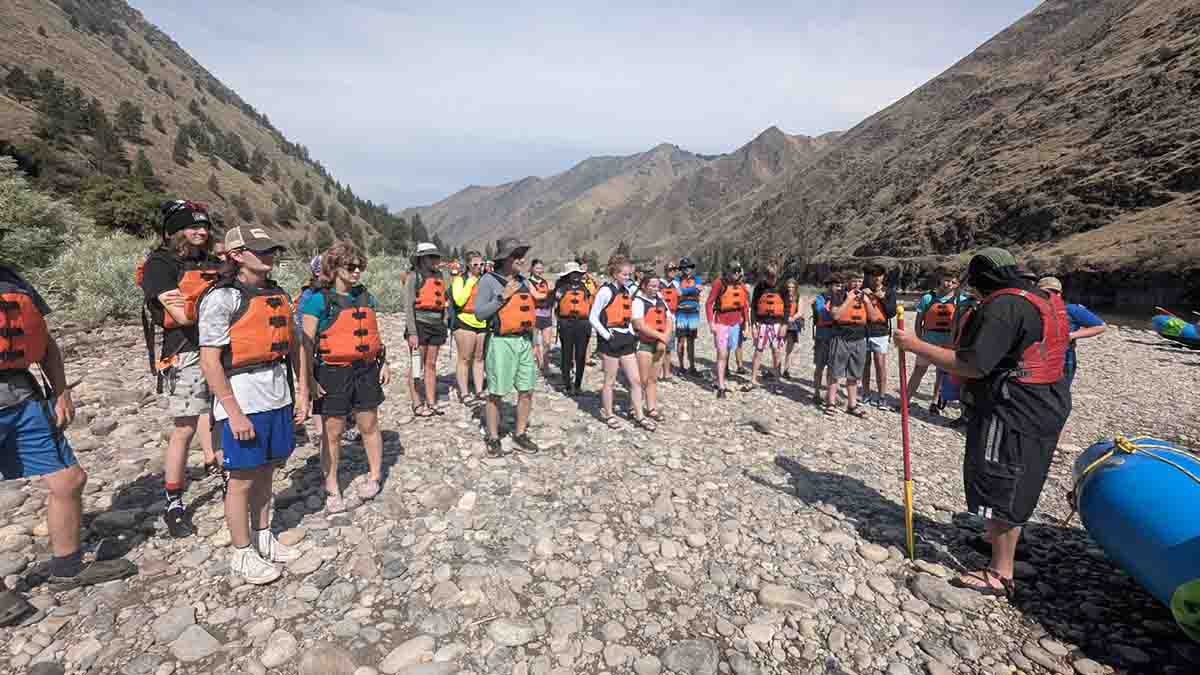
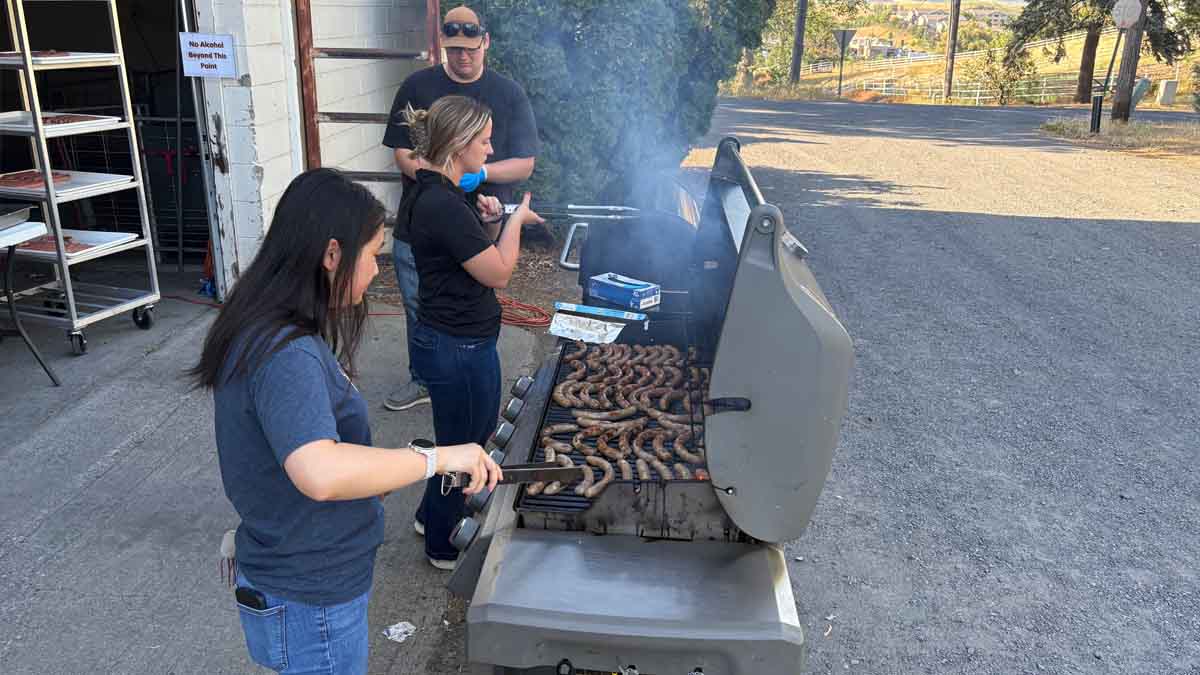
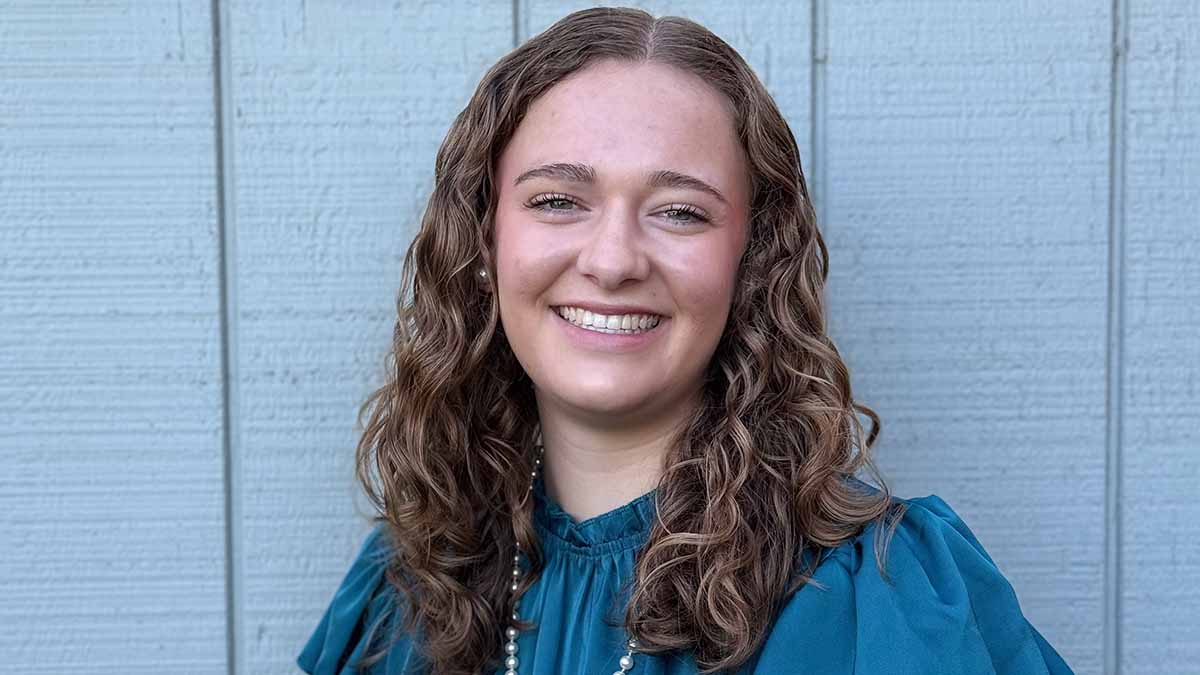
CALS in the News
- July 23 | Potato Grower | U of I researchers integral in deregulation of first field from PCN program
- July 22 | Lewiston Tribune | Heat wave leaves swimming pools packed, stores running out of air cond...
- July 21 | Idaho Ag Today | Ag information network of the west
- July 21 | Intermountain Farm and Ranch | U of I meat science team training retail meat cutters
Events
- Aug. 14 — Field Day at Parma, Parma
- Aug. 20-21 — Ranching for Profit Workshop, Sandpoint Organic Agriculture Center
- Aug. 21 — Aberdeen Potato Integrated Pest Management Field Day, Aberdeen
- Aug. 21 — Fermentation Basics, Online


